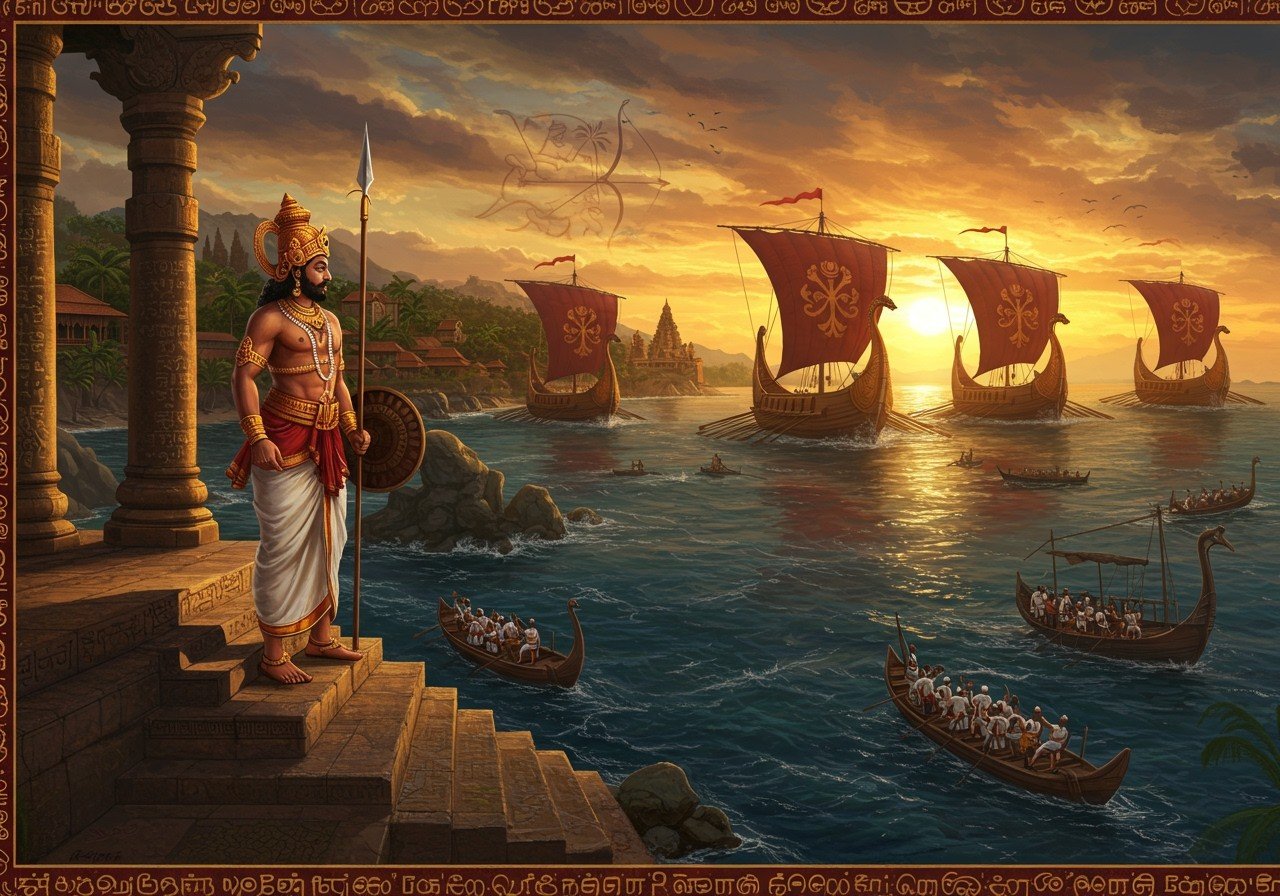
The Chera Empire, a prominent Tamil dynasty (4th century BCE – 12th century CE), significantly shaped southern India’s history and culture. This blog post delves into the Chera Empire’s territory, expansion strategies, and lasting influence on present-day Kerala and Tamil Nadu. Understanding their reign offers valuable insights into ancient Indian civilization and the Three Crowned Kings of Tamilakam.
Historical Background
The Chera Empire emerged during the Sangam period, marked by significant rulers like Uthiyan Cheralathan and Senguttuvan who spearheaded its expansion. Their maritime trade, even extending to the Roman Empire, fueled economic growth. Key historical events include:
- Establishment of Trade Routes: The Cheras established extensive maritime trade routes, connecting them with regions across the Indian Ocean and beyond, fostering economic prosperity and cultural exchange.
- Battles for Territorial Expansion: Strategic military campaigns and battles played a crucial role in expanding their territory and influence across southern India.
- Diplomatic Alliances: The Cheras formed alliances with neighboring kingdoms, fostering political stability and facilitating trade relations.
These events shaped the empire’s trajectory, fostering advancements in art, literature, and culture under the patronage of Chera kings.
Geographical Spread
At its zenith, the Chera Empire encompassed a vast area in South India, including present-day Kerala and parts of Tamil Nadu. Strategic coastal locations and control over vital trade routes facilitated their expansion. Kerala held particular significance:
- Cultural Hub: Kerala served as a vibrant cultural center, fostering art, literature, and unique traditions under Chera rule.
- Economic Center: The region’s strategic location facilitated maritime trade and economic prosperity for the empire.
Key cities like Muziris (a major port) and Karur played crucial roles in trade and cultural exchange.
Expansion Strategies
The Chera rulers employed a combination of warfare and diplomacy to expand their territory:
- Military Campaigns: Strategic military campaigns and key battles led to the annexation of new territories, solidifying their control over southern India.
- Diplomatic Alliances: Diplomatic efforts focused on establishing trade relations and securing political alliances with neighboring kingdoms, ensuring stability and growth.
Their maritime prowess played a crucial role, connecting them with other regions and driving economic expansion.
Cultural and Economic Impact
The Chera Empire significantly contributed to South India’s cultural landscape, particularly in art, literature, and architecture. Their extensive trade networks fostered economic prosperity and cultural exchange:
- Cultural Exchange: Interactions with other regions through trade led to a vibrant exchange of ideas, customs, and artistic styles, enriching the Chera cultural landscape.
- Trade Networks: The Cheras established vast trade networks, connecting them with regions across the Indian Ocean, including the Roman Empire, fostering economic growth and prosperity.
Notable artifacts and architectural marvels from this period include temples, inscriptions, and literary works that offer glimpses into their rich heritage.
Modern-Day Significance
The Chera dynasty’s legacy endures in Kerala’s cultural festivals, traditions, and identity. Ongoing efforts by historians and archaeologists continue to uncover and preserve their historical remnants.
Conclusion
The Chera Empire’s vast territory, strategic expansion, and cultural contributions provide invaluable insights into ancient southern India. Their legacy endures in Kerala’s cultural practices, reflecting a deep connection to the past. Learning about the Chera Empire enriches our understanding of India’s vibrant history and the enduring impact of its rulers.
FAQs
Where was the Chera dynasty located? The Chera dynasty primarily ruled in present-day Kerala and parts of Tamil Nadu in southern India.
What was the Chera dynasty’s primary state? Kerala is considered the primary state associated with the Chera dynasty.
What area did the Chera dynasty cover? The Chera dynasty’s territory encompassed parts of present-day Kerala and Tamil Nadu.
Are there maps of the Chera dynasty? Yes, historical maps depicting the Chera dynasty’s territory and expansion are available, providing visual representations of their influence in southern India.
Was the Chera dynasty in Kerala? Yes, Kerala was a significant region within the Chera dynasty’s territory and played a crucial role in their history.
Exploring the history of empires like the Cheras often sparks interest in traditional practices and goods. For those interested in exploring such cultural items, Poojn.in offers a wide selection. Discover traditional Indian goods and immerse yourself in the rich cultural heritage at www.poojn.in.
Looking for specific items related to your spiritual journey? Poojn.in offers a diverse range of products, from prayer items to traditional clothing. Visit https://www.poojn.in/product/10211/pure-cotton-cherry-color-pooja-asan-24×24 for a glimpse into our collection.


